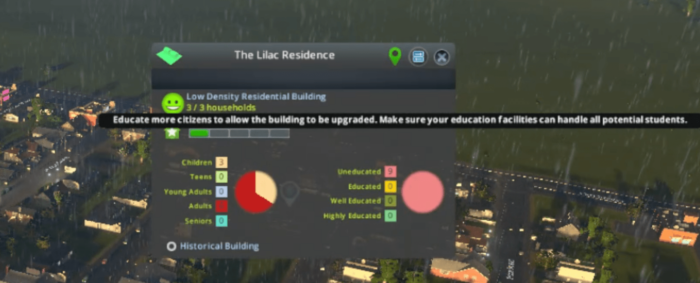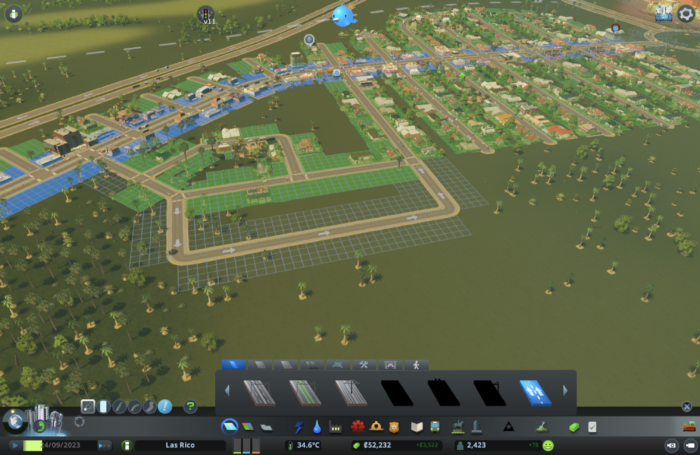In Cities Skylines, there are two types of residential zones – low-density and high-density zones. These zones have certain specifics that you should know before building them. In today’s article, we will look at the differences between these two and how to play with them properly.
How are households counted in Cities Skylines?
Zones affect how many citizens will live in your city. The households are impacted by the level of buildings (a higher level means more people) and the size of a zone (the bigger zone, the more people live there). It is important for you to focus on levelling your buildings. The more services you provide, the more your levels increase.

In the table below you can see how many households you can get when you level up.
| Zone | Level 1 | Level 2 | Level 3 | Level 4 | Level 5 |
|---|---|---|---|---|---|
| Low Res | ~0.2 | 0.25 | ~0.333 | ~0.375 | 0.4166 |
| Hi Res | 0.6 | 1.0 | 1.33 | 1.5 | ~1.6 |
The second thing I mentioned above that affects households is the size of your zones. Usually you will build 3×4 or 4×4, so these columns will be important to you.
| Zone | Level | 1×1 | 2×2 | 3×3 | 4×4 |
|---|---|---|---|---|---|
| Low Res | 1 | 1 | 1 | 1-2 (1.8) | 3-4 (3.2) |
| 2 | 1 | 1 | 2-3 (2.2) | 4 | |
| 3 | 1 | 1-2 (1.2) | 2-3 (2.7) | 4-5 (4.8) | |
| 4 | 1 | 1-2 (1.5) | 3-4 (3.4) | 6 | |
| 5 | 1 | 1-2 (1.7) | 3-4 (3.8) | 6-7 (6.7) | |
| Hi Res | 1 | 1 | 2-3 (2.4) | 5-6 (5.4) | 9-10 (9.6) |
| 2 | 1 | 4 | 9 | 16 | |
| 3 | 1-2 (1.3) | 5-6 (5.3) | 12 | 21-22 (21.3) | |
| 4 | 1-2 (1.5) | 6 | 13-14 (13.5) | 24 | |
| 5 | 1-2 (1.6) | 6-7 (6.4) | 14-15 (14.4) | 25-26 (25.6) |
So if you need to boost up your population and attract more people faster, you can build high residential zones that will be full width and length (4×4). You need to focus on updating these buildings.
A good question might be whether you can only build one type of residential building. To answer that, you can build low-density residential zones only, but your city will need a lot of space. If we compare low and high-density residential zones, we can see that 4×4 at level 5 has approximately 4x more inhabitants than low-density residential zones. If you need a larger population, you will need a lot of buildings.
Where to use low-density or high-density in Cities Skylines?
The best place to use low-density residential zones is in the suburbs of your city. Families often live in low-density zones, so schools and parks need to be developed in these parts of the city. I usually build these zones at the beginning to get my population up and open up those high-density zones. In the later stages of the game, I use these zones in the suburbs or some atypical places like a mountain village or a lakeside village.

It is important to have a good connection from your suburbs to the downtown or industrial zones. Since the residents of these zones usually use cars, you can optimize traffic when you have a good connection.

On the other side, there are high-density residential zones. These zones are good for building your downtown. There will probably be younger people with fewer children. That’s why you should focus on providing entertainment, high schools and a lot of work in the area. People living in high-density zones in Cities Skylines have higher education, so they need lots of interesting jobs.
When building downtown, focus on noise pollution. There will be more people in one place and the high commercial zones are noisy.